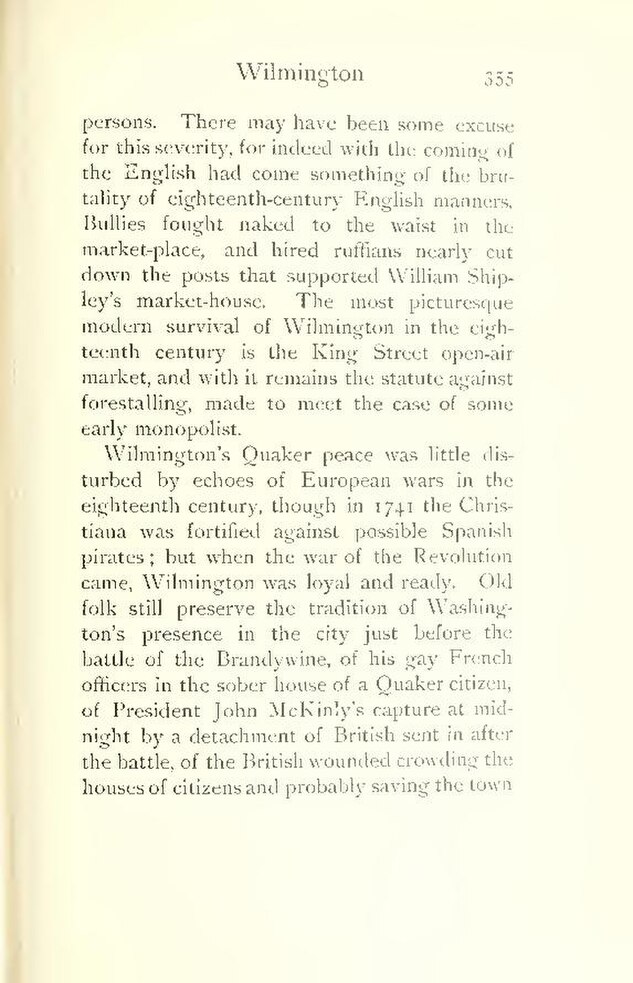persons. There may have been some excuse for this severity, for indeed with the coming of the English had come something of the brutality of eighteenth-century English manners. Bullies fought naked to the waist in the market-place, and hired ruffians nearly cut down the posts that supported William Shipley's market-house. The most picturesque modern survival of Wilmington in the eighteenth century is the King Street open-air market, and with it remains the statute against forestalling, made to meet the case of some early monopolist.
Wilmington's Quaker peace was little disturbed by echoes of European wars in the eighteenth century, though in 1741 the Christiana was fortified against possible Spanish pirates; but when the war of the Revolution came, Wilmington was loyal and ready. Old folk still preserve the tradition of Washington's presence in the city just before the battle of the Brandywine, of his gay French officers in the sober house of a Quaker citizen, of President John McKinly's capture at midnight by a detachment of British sent in after the battle, of the British wounded crowding the houses of citizens and probably saving the town
